This post may contain affiliate links. Please see our disclosure for more information.
Buttermilk, known as takra in Sanskrit, holds a very special place in the ancient system of healthy living from India, known as Ayurveda.
It was written in one of the ancient Ayurvedic texts:
“He who uses takra daily does not suffer from diseases, and diseases cured by takra do not recur.” AND “Just as amrita (divine nectar) is for the gods, takra is to humans.”
—Bhavaprakasha Chapter 6.7
According to Charaka, whose text on Ayurveda is considered an authority, the reason for takra’s special status is that this divine nectar helps to clear and purify the numerous subtle channels in the body that carry nutrients to our cells.
Buttermilk is a very unique dairy product in that it is a very healthy low-fat dairy product. It is also very easy to digest, since the probiotic lactic acid bacteria in the cultured yogurt have already started the work of digestion.
For those who prefer a plant-based probiotic buttermilk, use a cultured plant-based yogurt of your choice and follow the same steps.
Although Ayurvedic buttermilk is made from yogurt, the nature of the yogurt once transformed into takra is completely different.
In the process of making buttermilk, water and spices are added, which adds lightness and digestive support to the drink. Sometimes the fat is also removed.
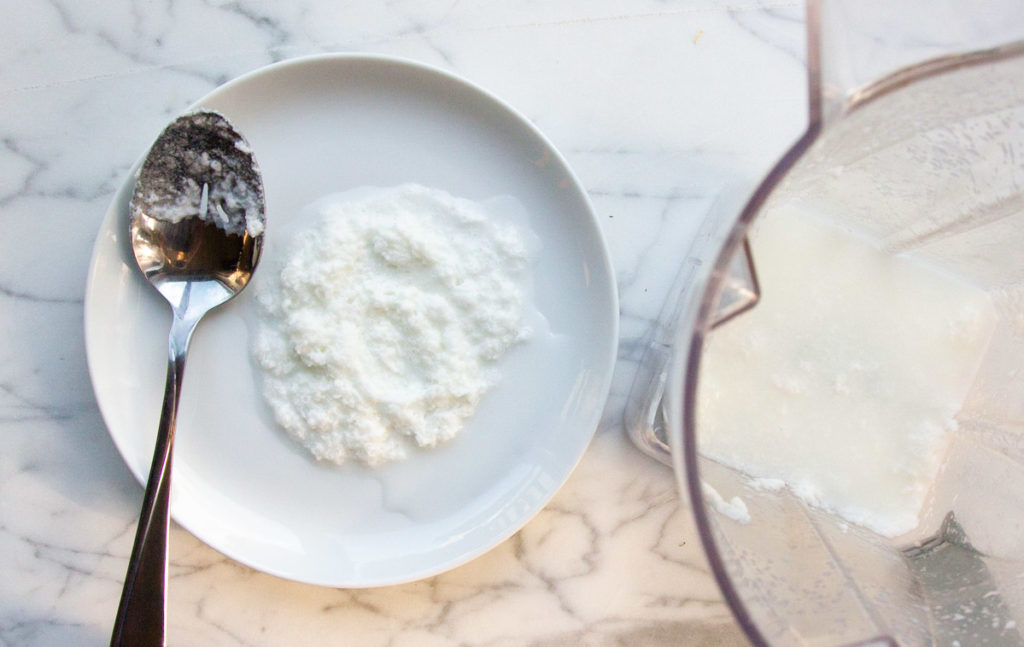
The process of blending while making buttermilk also serves to promotes agni, or digestive fire.
Live cultures in the yogurt are probiotic and very beneficial for gut health, and since this is a highly digestible drink designed to promote metabolism—including on the subtlest of levels—you can be assured that the beneficial bacteria will be welcomed by your body.
Rather than relying on expensive probiotics supplements, you can make buttermilk at home in under 10 minutes.
And with a variety of spices and flavors to experiment with, your new probiotic supplement is waiting for you to try and enjoy it.
Health benefits of Ayurvedic buttermilk
- Supports absorption of nutrients
- Nourishes the brain
- Reduces bad cholesterol
- Assists in the digestion of fats
- Supports hydration due to high electrolyte content
- Restores healthy appetite
- Supports weight reduction
- Restores the intelligence of the colon and relieves constipation and gas
- #1 Ayurvedic treatment for IBS
- Helpful for acid reflux, Crohn’s disease, and digestive weakness
- Alleviates hemorrhoids
- Improves circulation
- Anti-inflammatory
It may also be tolerable for people with lactose intolerance, since lactose is contained in the fat, and the fat is removed when making buttermilk.
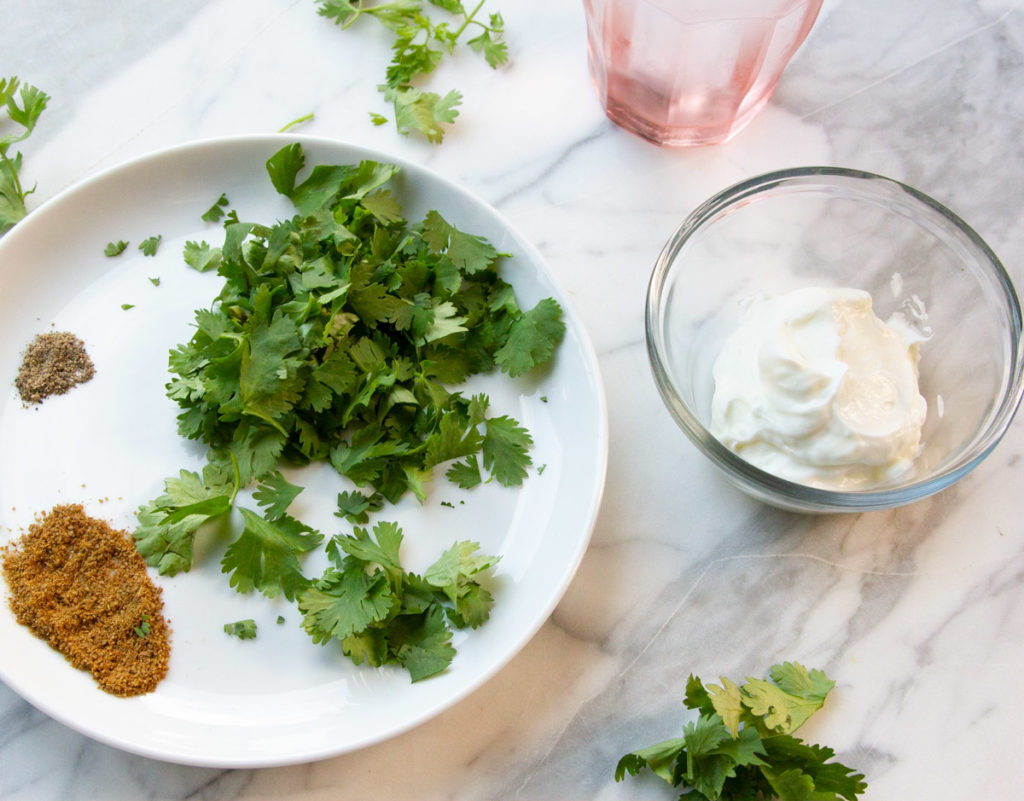
Beneficial for IBS, Crohn’s Disease, acid reflux, and digestive weakness
In India, Ayurvedic buttermilk is a top choice for treatment of irritable bowel syndrome (IBS), according to Dr. Rohit Mehta B.A.M.S., MD, senior medical officer at the Himalayan Research Institute for Yoga & Naturopathy.
This is linked to the health benefits of restoring the intelligence of the colon, and its constipation relieving properties, however I could not find medical studies supporting this.
I did find an article suggesting that curry leaves in particular are helpful to add to buttermilk for IBS. Curry leaves are mild, lemony, and slightly pungent. You can find them fresh or dried at Indian grocers. The fresh leaves freeze well, so it’s convenient to have them always on hand.
Buttermilk is also alkaline forming, so it can be very helpful in cases of acid reflux. Ayurvedic buttermilk cools and soothes the esophagus and stomach.
When to enjoy Ayurvedic buttermilk
In India, buttermilk is regularly enjoyed after lunch, but it can also be had with your meal.
Ayurvedic practitioner Kerry Harling says Ayurvedic buttermilk is helpful after a heavy meal.
She says drinking a small glass of buttermilk helps to wash down fats and oils that normally accumulate on the inner walls of the digestive tract.
If you are going to have it with food, then have just 1 cup and take it into account as the liquid portion of your meal.
You can also enjoy Ayurvedic buttermilk in the afternoon as a pick-me-up or as digestive support.
It is particularly nice when you are feeling overheated. In this case, I suggest adding cilantro, which is also cooling.
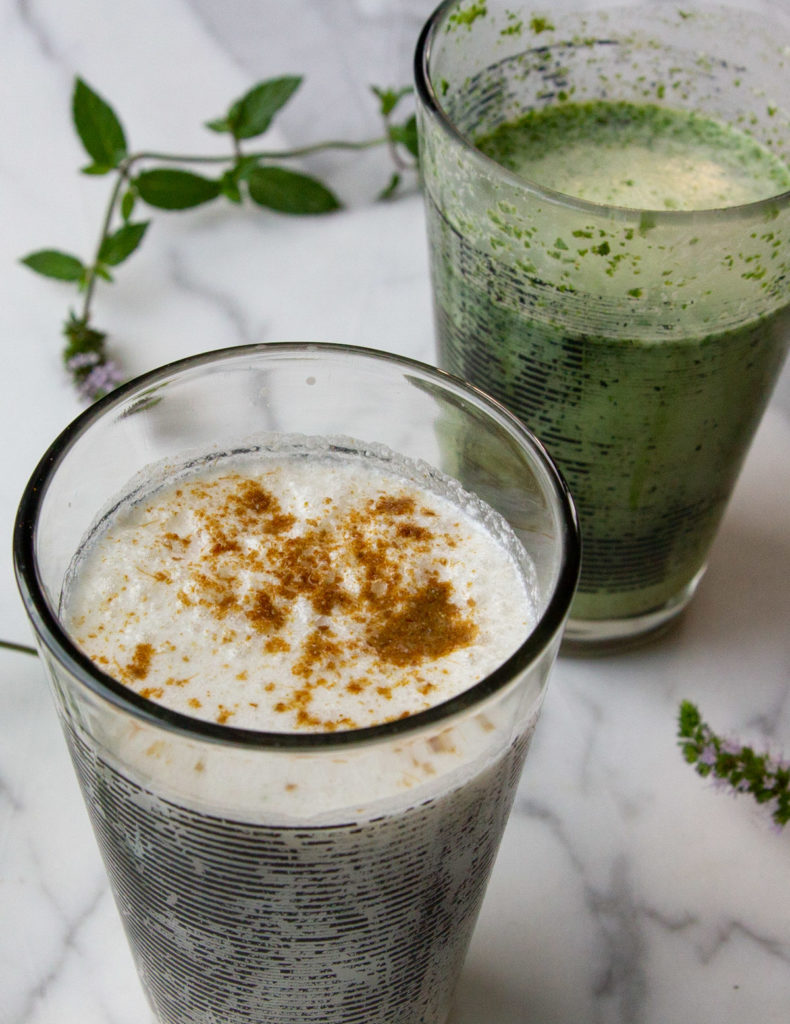
What is takra?
Takra is a drink made from yogurt, water, and digestive herbs and spices.
It is made with 1 part yogurt and 4 parts water. It is then blended (usually in a blender, but you can also shake it in a jar).
The blending process separates the fat from the yogurt. The fat will appear as frothy bubbles floating on the top of the takra.
You can use a spoon to remove the fat, or strain the takra through a sieve.
You can choose to remove all of the fat, most of it, half of it, or none of it.
Your choice: How much fat you keep can be decided by your dosha
KAPHA: The lightest takra is one with all the fat removed. This is the best choice for kapha individuals, or people who are experiencing sluggish, weak, or slow metabolism (manda agni).
VATA: The heaviest takra is one with none of the fat removed, and this is a good option for individuals with high vata, as fat is very grounding and soothing for them.
Note that buttermilk can be constipating if taken regularly. You can add a squeeze of fresh lemon juice to counter this.
PITTA: Somewhere in between is perfect for pitta individuals, who generally have strong digestion, and benefit from heavier foods, but who don’t tolerate large amounts of fat.
In general, takra is warming, so it is best for vata and kapha body types, however pitta individuals can still enjoy it with cilantro, mint, fennel, and other cooling spices. It is also recommended to use pitta recipes in the summer.
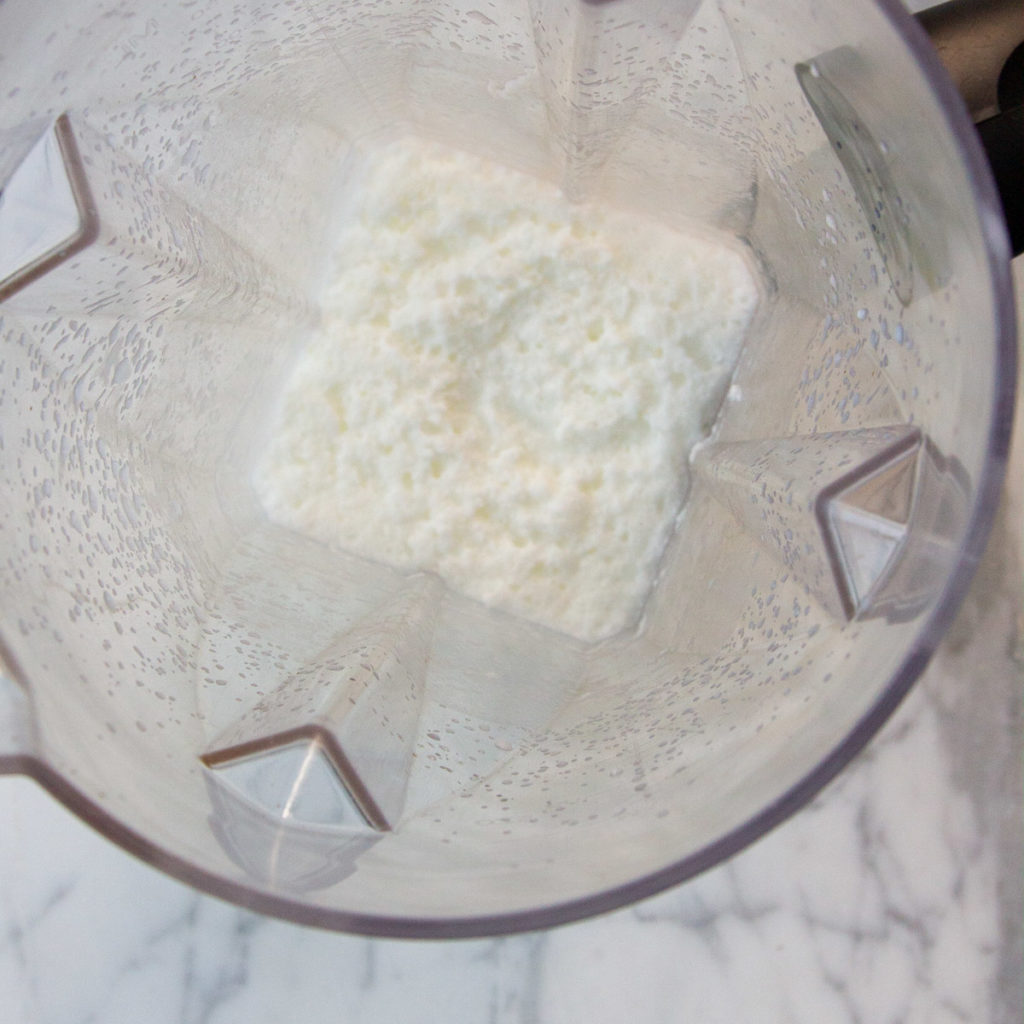
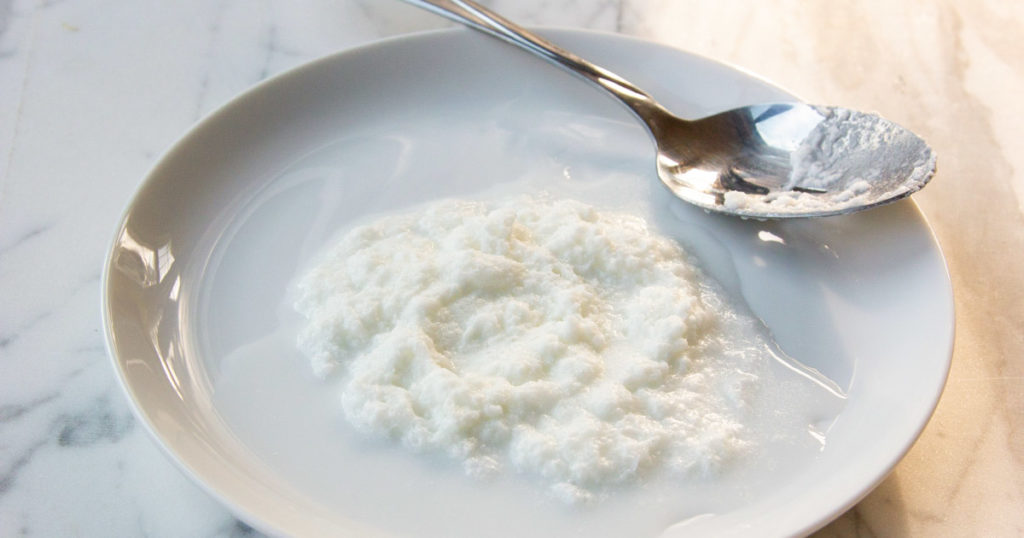
Takra is not lassi
There is a lot confusion on the internet about what takra really is.
Many people are calling it lassi, which is the more widely known yogurt-based drink you get at Indian restaurants.
Lassi is NOT takra.
Lassi’s have more yogurt and less water, and the fat is not removed.
Lassi’s are also typically sweetened with fruit, such as with the popular, but very difficult to digest, mango lassi. (Typically in Ayurveda, milk and fruit are not compatible.)
Why is blended yogurt called buttermilk?
I was confused by this for a long time myself. We all know that buttermilk is something different than blended yogurt right?
But it’s not!
Buttermilk is the clear liquid you get when you blend cultured cream to make butter. I have done this myself to make ghee the traditional way.
It starts with the traditional way to make butter. To do so, you start with thick cream and culture it into a creamy yogurt.
Then you churn that thick yogurt vigorously to separate the fat from the liquid.
It is a beautiful process to see how butter appears seemingly out of thin air from the milk.
So when we make Ayurvedic buttermilk, we are in fact separating the butterfat from the yogurt.
The froth and foam you skim off the top can actually be collected and further processed into butter.
It is just that you would need quite a bit more to get a substantial amount of butter, and that’s why we discard it when making small amounts.
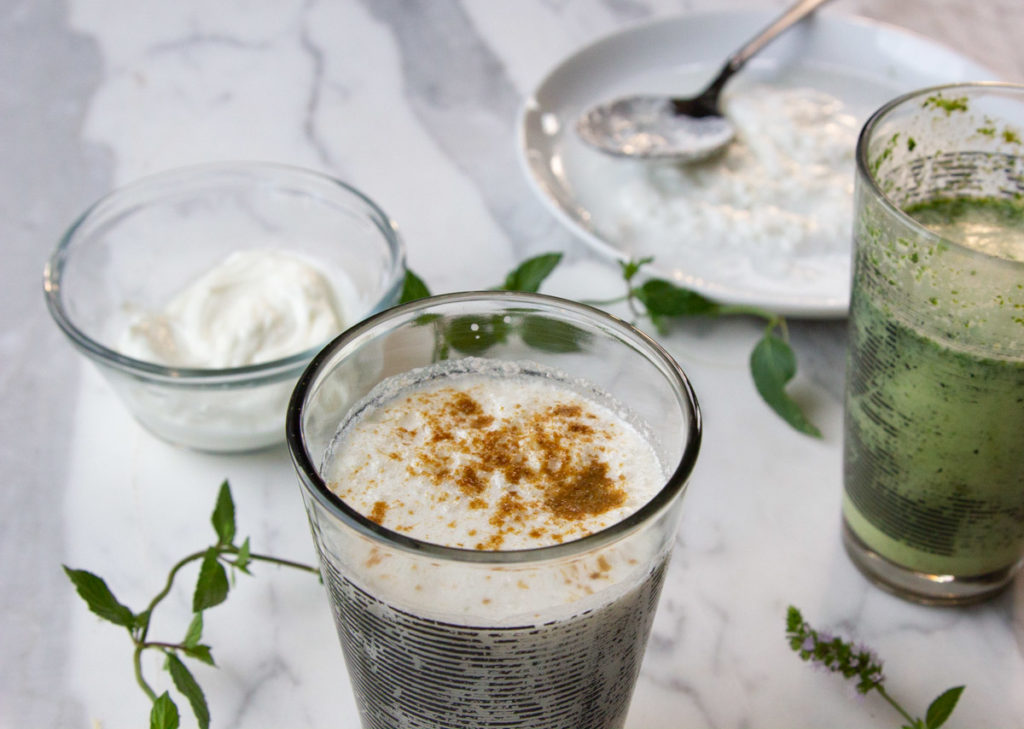
Tasty spice combinations
In general, buttermilk makes the body feel warm. This warmth makes it supportive for digestion, and for consumption during cooler weather.
However, there are plenty of preparations that add cooling qualities to the buttermilk, making it more suitable for pitta dosha, and for general enjoyment in the summer.
Enjoy Ayurvedic buttermilk at room temperature or slightly chilled. If you consume it very cold, it will feel heavier to the body.
Start with the basic recipe, and then spice it up with the fun and flavorful options below!
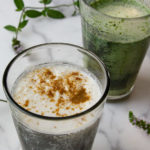
Basic Ayurvedic Buttermilk (Takra) Recipe
Ingredients
- 1/4 cup whole milk or plant-based yogurt
- 3/4 cup cold water
- pinch mineral salt
- pinch cumin (sub with spices of your choice; see recipe post for details)
Instructions
- Place the yogurt, water, salt and cumin in your blender.
- Blend until very frothy (30-60 seconds).
- Pour into a glass and enjoy. Store any remainder at room temperature, and use the same day. This recipe makes 1 to 2 servings, depending on your appetite.
Notes
Nutrition
Best takra recipes for calming vata, or for anyone with indigestion
- roasted cumin and salt
- coriander and salt
- roasted cumin, fresh cilantro, black pepper, and salt (strain through a sieve)
- ground ginger, cumin, and salt
- asafetida, cumin, and salt (helpful for gas and bloating)
- ground ginger, cumin, and coriander (gas and bloating)
- dry ginger and salt (vata)
* high vata individuals with constipation may find the astringent quality of Ayurvedic buttermilk makes their stools drier. Adding a squeeze of lemon or lime mitigates this.
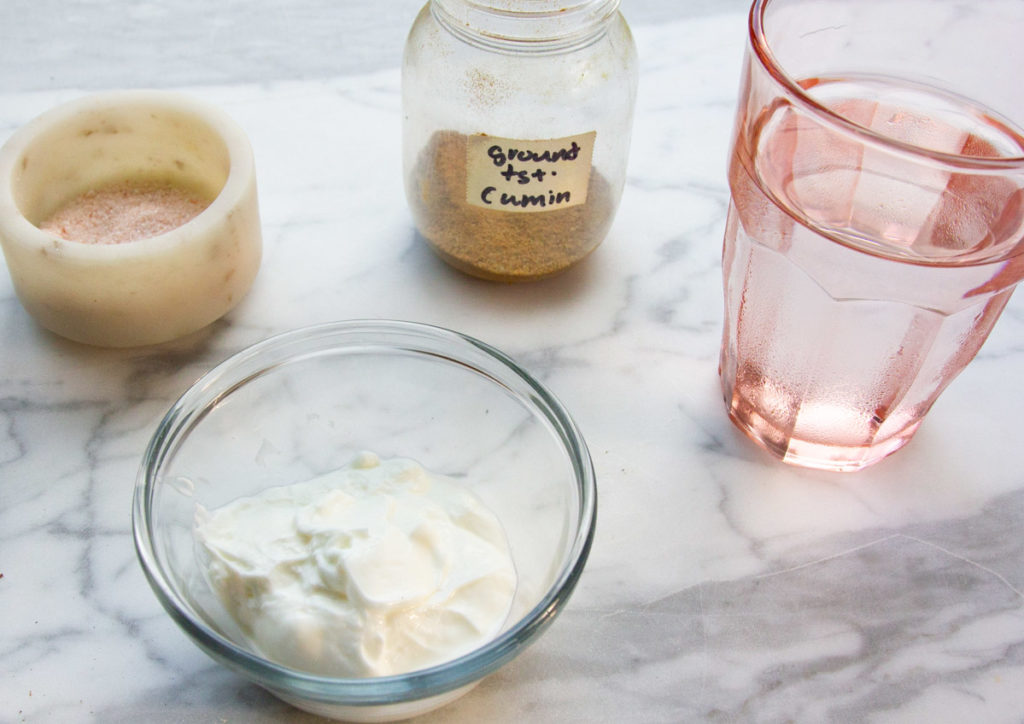
Best takra recipe for kapha
- with trikatu (for kapha)
- with black pepper (kapha)
- with pippali and black salt (constipation/IBS)
- with fresh mint, black pepper, and salt (kapha)
Best takra for pitta or summer consumption
- with sugar (for pitta)
- with sugar and cardamom (for pitta)
- with sugar, rose water, and cardamom (for pitta)
- with fresh or dried mint (pitta)
- with sugar and fresh mint (pitta)
>> For more information about Indian spices, see A Guide to Indian Spices.
>> Have you heard about Ayurveda’s extraordinary Ginger-Lime Pickle? Visit this post to learn how it can support your digestion, increase hydration, reduce inflammation, and more!

Great to read about Buttermilk…You are bringing up Ayurveda into new levels Andrea.
I’m going to try this with buffalo yogurt. Can I make several cups at a time and if so how long can I keep it in the fridge? I did try it with your course and it went down very easily! Now I will try it more often.
Hi Ann, Buffalo milk is common in India, so i am quite familiar with it. It has a higher fat content than regular milk. I don’t see any reason why it wouldn’t work. You have the option after blending to remove as much fat as you want because it separates out. Ideally you consume the day you make it, but you should also be able to keep it in the fridge for 2-3 days. Give it a stir before enjoying each time.